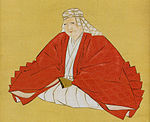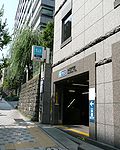Yasukuni Shrine (靖国神社 or 靖國神社, Yasukuni Jinja, lit. Peaceful Country) is a Shinto shrine located in Chiyoda, Tokyo. It was founded by Emperor Meiji in June 1869 and commemorates those who died in service of Japan from the Boshin War of 1868–1869 through the First Indochina War of 1946–1954. The shrine's purpose has been expanded over the years to include those who died in the wars involving Japan spanning from the entire Meiji and Taishō periods, and the earlier part of the Shōwa period.The shrine lists the names, origins, birthdates, and places of death of 2,466,532 men, women, children, and various pet animals. Among those are 1,068 convicted war criminals, 14 of whom are A-Class (convicted of having been involved in the planning, preparation, initiation, or waging of the war). This has led to many controversies surrounding the shrine. Another memorial at the Honden (main hall) building commemorates anyone who died on behalf of Japan, and so includes Koreans and Taiwanese who served Japan at the time. In addition, the Chinreisha ("Spirit Pacifying Shrine") building is a shrine built to inter the souls of all the people who died during WWII, regardless of their nationality. It is located directly south of the Yasukuni Honden.
Japanese soldiers fought World War II in the name of Emperor Hirohito, who visited the shrine eight times between the end of the war and 1975. However, he stopped visiting the shrine because of his displeasure over the enshrinement of top convicted war criminals. His successors have never visited the shrine.Various Shinto festivals are associated with the shrine, particularly in the spring and autumn seasons when portable Mikoshi shrines are rounded about honoring the ancestral gods of Japan. A notable image of the shrine is the Japanese Imperial Chrysanthemum featured on the gate curtains leading into the shrine. The current 13th High Priest incumbent of the shrine is Tatebumi Yamaguchi, who was appointed on 1 November 2018 after Kunio Kobori.










